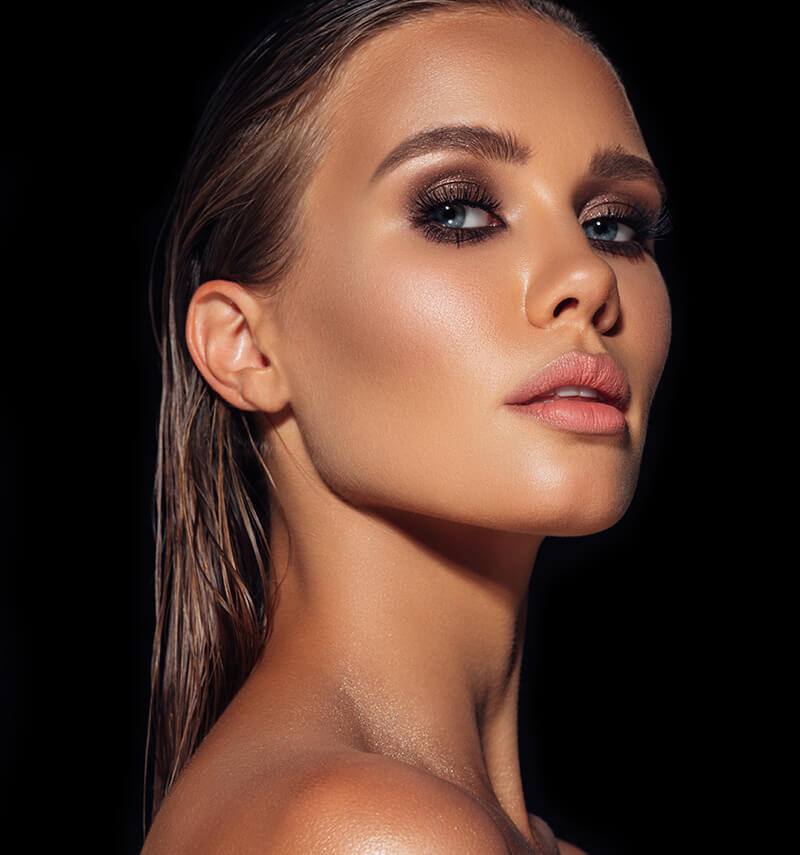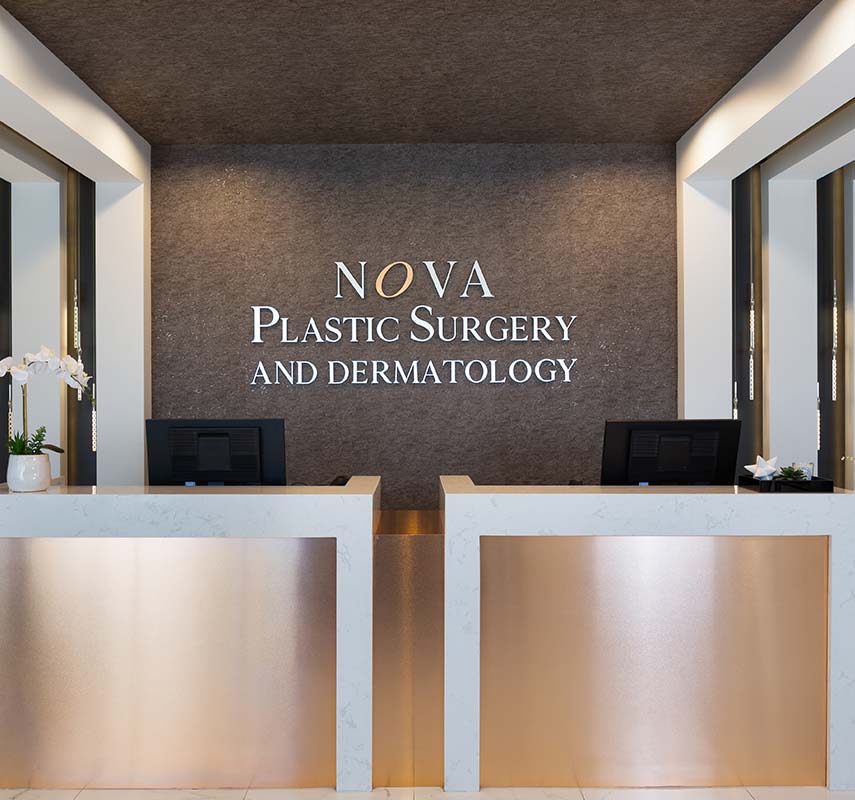
Laser Resurfacing
What is Laser Resurfacing?Laser skin resurfacing, also known as a laser peel or lasabrasion is the use of a laser beam to correct problem areas of the skin such as wrinkles, acne scarring, age spots, or other blemishes. Many patients in Virginia seek Laser resurfacing as it rejuvenates the skin’s epidermis and dermis, removing damaged skin and encouraging the growth of collagen. After a laser resurfacing treatment, the blemished skin will be gone and it will be replaced with smooth, tight new skin.
Other skin issues that laser resurfacing can treat include warts, uneven skin tone, some birthmarks, liver spots, chickenpox scars, and wrinkles that did not go away after a facelift.
Schedule a Consultation
How Does Laser Resurfacing Work?
Laser resurfacing works with the use of one of three types of lasers: an erbium laser, a non-ablative laser or a carbon dioxide laser.
These forms of lasers allow the surgeon to be very precise in what areas of the skin they are treating, without overheating the surrounding tissues.
A carbon dioxide laser uses “ultrapulsed” light energy (meaning the pulses from the laser are very short). The laser essentially vaporizes the damaged skin one layer at a time. This laser can be used to treat a number of skin issues, including wrinkles and scarring.
An erbium laser, also called a Er:YAG, produces wavelength energy that is absorbed by the water in the skin cells. Erbium lasers are most commonly used to treat mild to moderate wrinkles on the face, neck, chest, and other areas of the body. This laser causes less redness and irritation than a CO2 laser, so you have less downtime.
Non-ablative lasers are also known as non-wounding lasers. They act on the underlying layers of tissue without burning off the upper layers. This results in less downtime, but you need to come in for multiple treatments to get the same effect as you would with one session of ablative laser treatment.
Who is A Good Candidate for Laser Skin Resurfacing?
A good candidate for laser skin resurfacing will have a positive outlook and realistic expectations of the outcome of the procedure. He or she will be undergoing laser skin resurfacing for personal reasons, and not to satisfy anyone else.
Good candidates will not have very dark skin, or be currently under treatment for acne. Patients with dark skin can take up to nine months to get their usual pigment back, which is generally longer than most patients want to wait. Your surgeon will let you know if your skin tone is inappropriate for laser resurfacing treatment.
Patients with some skin disorders, or those on some medications might not be good candidates for laser treatments. The treatment will not be very effective on those with jowls, severe wrinkles, or excess skin. Patients with existing burns and those who get cold sores regularly might also be unable to get laser skin resurfacing.
Contact UsWhat Happens During My Consultation for Laser Skin Resurfacing?
During your consultation for laser skin resurfacing, your provider will review your medical history to make sure you aren’t on any medications or undergoing any treatments that might interfere with the laser therapy.
She will evaluate your skin to make sure your complaints can be treated with a laser. You will discuss the risks associated with the treatment, as well as any pre- or post-operative instructions.


How Do I Prepare for Laser Skin Resurfacing?
You will also need to stop smoking beforehand, and avoid unnecessary sun exposure for several weeks leading up to the treatment.
You might be asked to take a round of antibiotics before the laser skin resurfacing, to help prevent infections. If you frequently get cold sores but your surgeon has cleared you for treatment, he might prescribe you an antiviral to prevent a breakout brought on by the laser.
Some patients will be asked to do a round of topical skin treatments (usually a retinoid) for four to six weeks before the laser resurfacing, to prepare the skin. Follow all application instructions if you are given this treatment beforehand.
Review any paperwork and post-operative instructions beforehand, and make sure you have button-down shirts on hand at home. You will need to arrange to have someone drive you home after the procedure.
For more information about the after care you visit our page on Laser resurfacing after care instructions
How is Laser Skin Resurfacing Done?
You will be prepped for the procedure and given any anesthetic selected by your provider (usually local, possibly with an additional oral sedative). If you are having whole-face ablative laser treatment, you may be given general anesthesia.
The provider will then aim the laser at the specific problem areas you want targeted. The beam will burn off the top layer of skin, and will heat the underlying layers to stimulate new collagen growth. If you have non-ablative laser treatments, you will probably have a cooling gel applied to the skin before the laser is used. The upper layer of skin remains intact with non-ablative treatments, and those can usually be done in the doctor’s office as opposed to a surgical center.
Once the treatment is done, the provider may apply a healing ointment to the treated areas, and cover it with bandages to keep out water and light.

What is Recovery Like for Laser Skin Resurfacing?
Non-Ablative Lasers If you have non-ablative laser treatment, there is little to no recovery time.
You can manage any stinging with cold compresses or over-the-counter pain medication. You can generally go right back to work and wearing makeup. Stay out of the sun, if possible, for as long as directed by the doctor’s office.
Ablative Lasers Your skin after ablative laser resurfacing will be red and probably swollen. You will need to avoid picking at it. Your dressings will be removed within three days, after which point you will be responsible for keeping the area clean with saline solution and covered with a recommended ointment. The initial swelling and wound treatment will continue for up to ten days, after which you may continue to see redness for up to 30 days. Most patients can go back to work within one to two weeks, depending on the type of laser that was used and the extent of the treatment area.
If you still have redness after 30 days, you can begin to wear oil-free makeup to cover it up until it fades. During your recovery period, sleep with your head elevated to help with swelling. Wearing button-down shirts will keep you from having to pull something over your face. Avoid strenuous activity until you are cleared by your surgeon.
When Can I See My Final Results?
The redness associated with laser skin resurfacing will resolve within about 30 days for most patients. However, some patients may have redness for up to three months. Once the redness has faded, the results you see will be your final results.
What Are the Risks of Laser Skin Resurfacing?
However, there are risks that complications can develop. Risks include acne or cold sore breakouts, infection, scabbing, hyperpigmentation, redness that takes longer than predicted to go away, and swelling.
The best way to avoid complications is to select a Board Certified Plastic Surgeon for laser skin resurfacing. Board certified surgeons have the experience and training necessary to help you meet your goals with as few complications as possible. Following all your pre- and post-operative care instructions will also help prevent problems.
How do I Take Care of Myself After My Laser Procedure?
This will help you minimize the risk of complications. Infection can be prevented by daily washes (4 times a day) with a mix of warm water, Cetaphil and Hydrogen peroxide, this is continued for about 4-5 days. Followed by the use of moisturizer. It is crucial to avoid direct sun exposure for the first 7 days and to always wear sunscreen after that. Below are products that you should have at your home prior to your procedure so you can use them immediately after.
